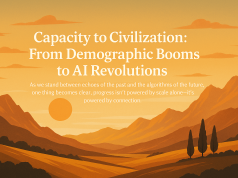The seismic shift caused by the global pandemic has undeniably transformed the work landscape, introducing a new era for the gig economy, especially in the bustling heart of New York. As traditional employment took an unforeseen hit, flexible work arrangements rapidly ascended, offering both a lifeline and a new normal for many New Yorkers. This surge in the gig economy is not merely a trend but a profound evolution of work, security, and lifestyle.
The allure of the gig economy lies in its inherent flexibility. Workers can often set their own hours, choose their tasks, and have the freedom to juggle multiple projects from different clients – a form of professional autonomy that is highly attractive in today’s fast-paced world. Moreover, the rise of digital platforms has made these opportunities more accessible, connecting freelancers with a global market of consumers and businesses seeking their services.
However, with flexibility comes uncertainty. Gig workers frequently face inconsistent income streams, the absence of traditional job benefits such as health insurance, paid leave, and retirement plans. The very essence that makes gig work appealing – its transient nature – also leaves workers vulnerable to market fluctuations and with little recourse during lean periods.
Traditional employment offers a counterbalance to these concerns, providing a sense of security through steady paychecks and benefits. Yet, career progression in structured environments can often be slow and bureaucratic, driving the ambitious and entrepreneurial spirits toward the gig economy’s promise of growth and opportunity.
In the heart of New York, where the cost of living is famously high, the challenges for gig workers are amplified. Without a safety net, a single dry spell can lead to significant financial distress. This calls for a robust discussion on the role of government and private sectors in supporting gig workers.
Perhaps the answer lies in innovative solutions that bridge the gap between the freedom of gig work and the stability of traditional employment. For instance, portable benefits – where benefits are tied to the individual, not the job – could provide a form of security as gig workers navigate between projects. Similarly, co-working spaces and gig-worker unions could offer a sense of community and collective bargaining power.
New York City, always a forerunner in cultural and economic trends, has the potential to pioneer these changes. Supportive policies and progressive thinking could yield a new hybrid work model that empowers workers while enhancing the city’s economic dynamism.
As we stand at the crossroads of the future of work, it’s clear that the gig economy is reshaping workplace norms. It’s not just about where we work, but how we work and how we define our relationship with work. New York, as always, has the spotlight, documenting the shifts and adapting in real-time. The workplace is no longer a fixed location but an ecosystem of opportunities spread across the city’s five boroughs and beyond, accessible to anyone with a laptop and a dream.
In conclusion, the gig economy in post-pandemic New York presents a complex landscape marked by independence, innovation, and instability. It’s a brave new world of work that requires careful navigation, thoughtful support structures, and, most importantly, a willingness to adapt to the ever-changing tides of economic necessity and personal aspiration.




























